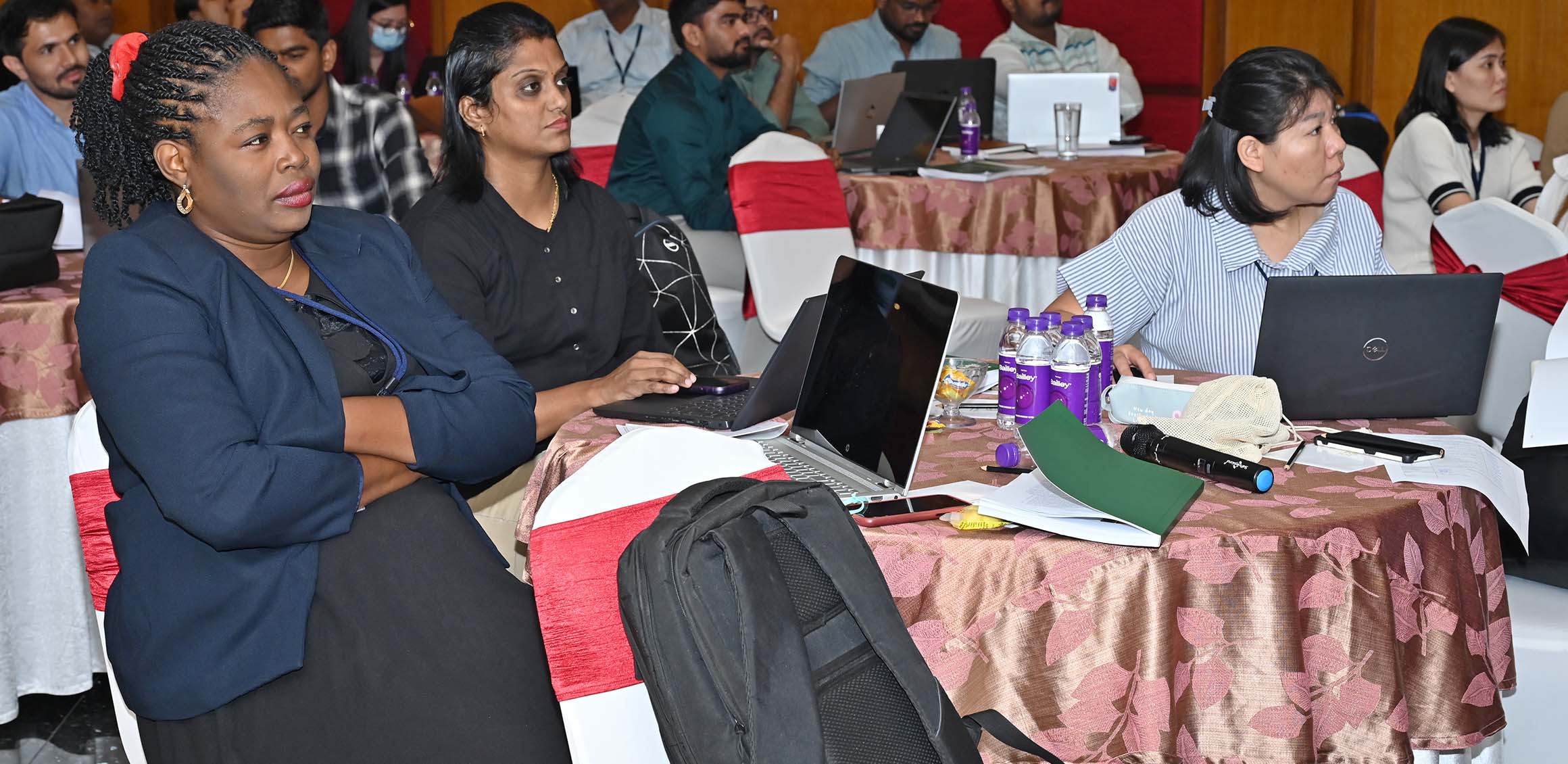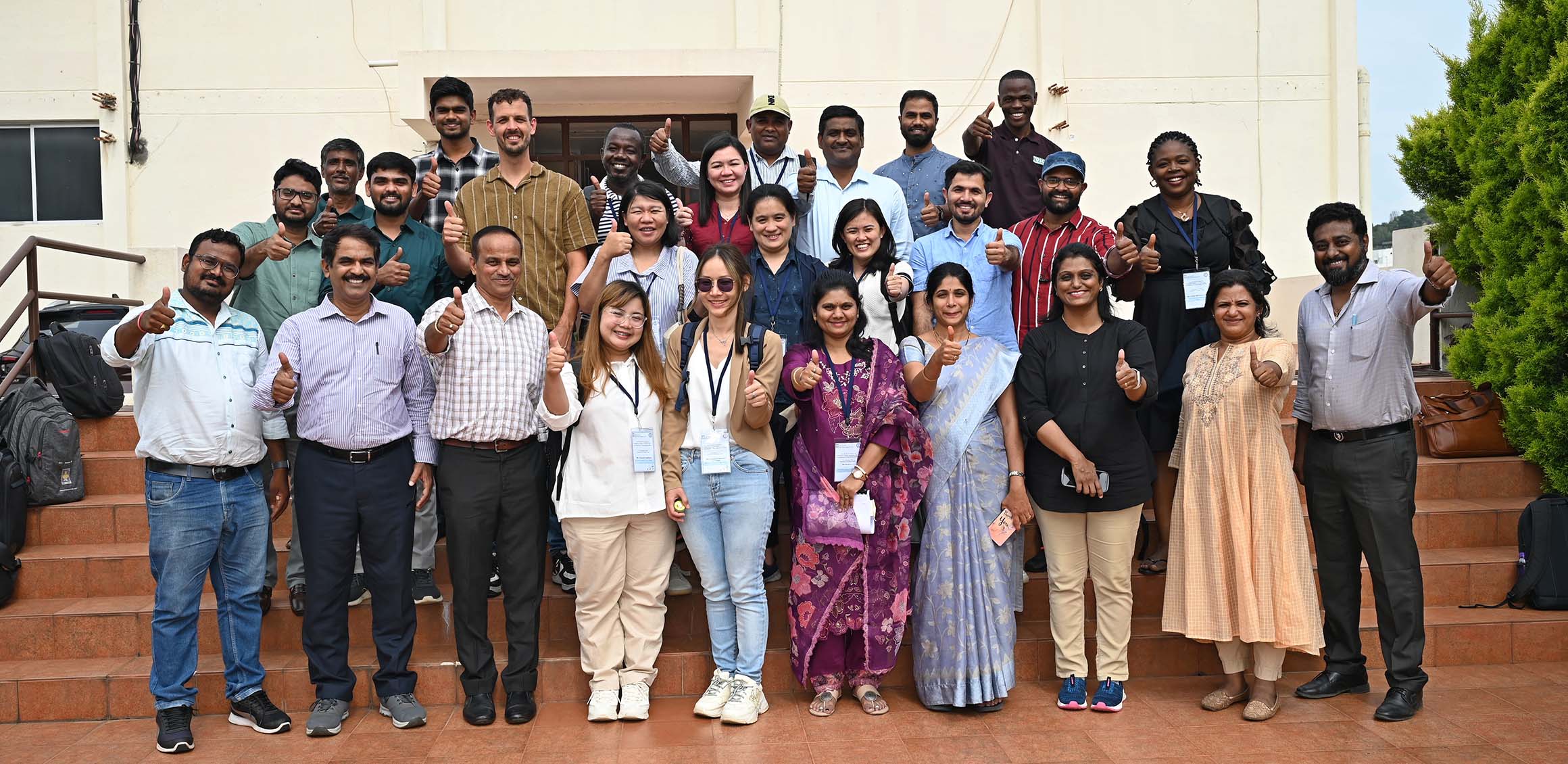ISTA Seed Health Workshop
In the vibrant city of Bangalore, we recently co-hosted a Seed Health Workshop with International Seed Testing Association (ISTA), Switzerland from September 2-4, 2024.
The main objective was to conduct training to help provide healthy seeds to growers across the globe. Our focus was on Validation, Quality Assurance, and Accreditation of Seed Health Methods.
A Global Gathering for Seed Health
This workshop was not just another event on the calendar; it was a convergence of minds from across the globe. With 21 participants hailing from seven countries—India, Thailand, Nigeria, Vietnam, Tanzania, The Netherlands, Philippines and Technical committee (T-COM) of Seed Health Chair, Ruud Barnhoorn from the Netherlands—the event marks the importance of global collaboration in ensuring seed quality. Attendees represent both public and private sectors, bringing together diverse perspectives and expertise.
Mr. Ruud Barnhoorn, Chair-TCOM of the ISTA Seed Health Committee, Naktuinbouw, The Netherlands addressed topics such as the application of statistical concepts, characterisation of seed lots, and analytical sensitivity, specificity, and accuracy in determining the level and method of pathogen detection. He also discussed the selection of samples, homogeneity checks, the number of samples and labs participating in Comparative Tests (CT) and Proficiency Tests (PT). The analysis of results, and the rating of labs were also discussed along with detailed practical sessions that were beneficial to the participants.
Dr. Mahesh B, Member-TCOM of the ISTA Seed Health Committee, INDAM, India, introduced seed health, along with the ISTA organization and its accreditation system. He highlighted the importance of sampling and the minimum quantity required for the detection of seed pests, as well as the need to validate the lab's ability to perform seed health methods. He also discussed the activities of the Seed Health Committee, quality assurance in seed health testing, how to become accredited, the ISTA Proficiency Test (PT) program, PT ratings, and the benefits of ISTA membership.
Learnings from the workshop
• Understanding the presence and localisation of pests (Bacteria, fungus, insects, nematodes, virus and viroids) in the seed. Sampling and applying standard seed health methods (ISTA/ISHI) for detection of pest and validate ability of lab to perform a method.
• Evaluation of performance of the quality system in seed health lab by following quality management system and implementation of quality control program.
• Overview of key statistical tools for seed health testing; theoretical distributions in seed health testing; discrete and continuous distributions, statistical tests for outlier detection.
• Choosing and characterising seed lots
• Testing homogeneity for qualitative results; level of infection, test homogeneity for quantitative results using tools of homogeneity and Hampel’s and testing for stability for qualitative and quantitative results.
• Determining the level of detection of by Analytical sensitivity method; limit of detection; what is studied for that kind of method. Analytical sensitivity needed to validate a method and ability of a lab to perform a method.
• Specificity and accuracy involve evaluating whether the method generates false positive or negative results. Diagnostic sensitivity is the method's ability to detect target samples; diagnostic specificity is its ability to avoid detecting non-target samples. Accuracy is a combination of these two performance criteria. Repeatability and reproducibility, as well as accordance and concordance, are assessed in accordance with ISO 5725 standards.
• About the International seed testing association (ISTA) and seed health committee’s activities & quality assurance in seed health testing. ISTA accreditation program, how to become accredited and ISTA proficiency test (PT) program, PT rating and benefits of ISTA membership.
• Checking and maintaining performance of the lab: Proficiency tests
• Quality assurance system and what PT are needed, by which methods? How are PT organised and seed lot: based on the level of infection, statistical analysis and rating for quantitative / qualitative results.




